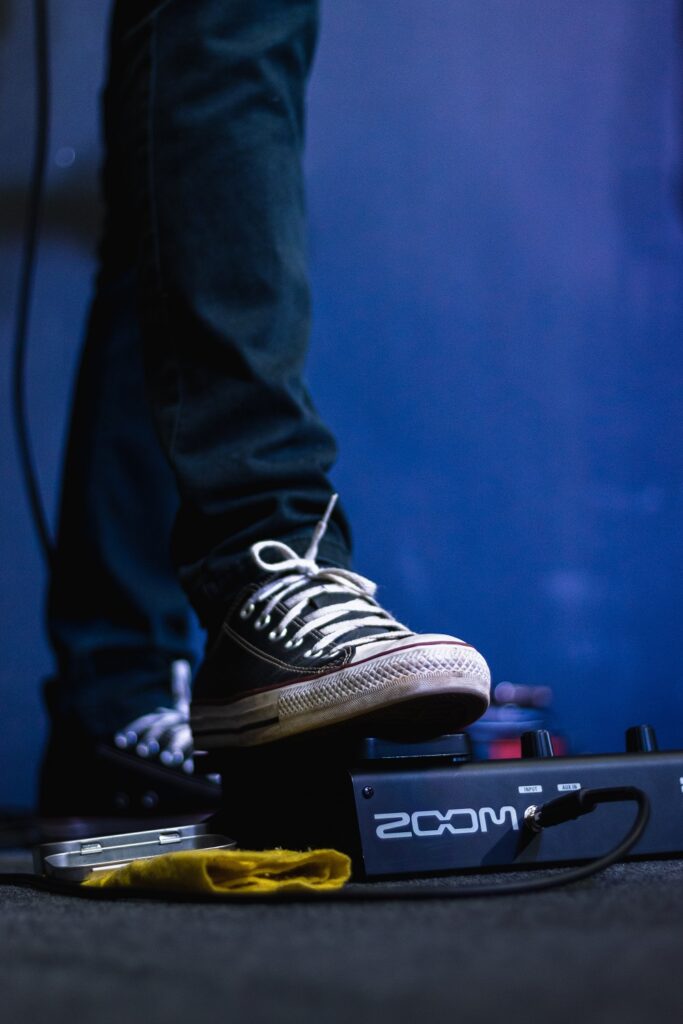
For guitarists and musicians, effects pedals are essential tools that add depth, color, and creativity to their sound. These small devices are designed to alter the signal from the guitar and create various sonic effects, ranging from subtle nuances to wild, experimental sounds. With a wide range of options available, understanding the different types of effects pedals is crucial for harnessing their full potential. In this article, we will explore the fundamental categories of effects pedals and provide insights into their unique characteristics.
1. Overdrive and Distortion Pedals:
Overdrive and distortion pedals are some of the most commonly used effects in rock, blues, and heavy genres. They add grit, sustain, and harmonics to the guitar’s signal, simulating the sound of an overdriven tube amplifier. Overdrive pedals typically produce a mild to moderate breakup, while distortion pedals generate more aggressive and saturated tones. These pedals are often used to add warmth, crunch, and bite to the guitar sound, making them staples in many players’ pedalboards.
2. Delay Pedals:
Delay pedals create echoes and repetitions of the original guitar signal, resulting in a sense of space, depth, and ambience. They allow players to experiment with rhythmic patterns, create atmospheric textures, and add a sense of spaciousness to their sound. Delay pedals offer adjustable parameters such as delay time, feedback (number of repeats), and sometimes modulation, enabling a wide range of delay effects, from subtle slap-back to lush, cascading echoes.
3. Reverb Pedals:
Reverb pedals simulate the natural reverberation of different spaces, such as rooms, halls, or cathedrals. They add a sense of ambiance and create a spacious sound by emulating the reflections of sound waves bouncing off various surfaces. Reverb pedals can provide anything from subtle, realistic room ambience to lush, atmospheric reverbs. They are particularly useful for adding depth, dimension, and a sense of “air” to the guitar sound.
4. Modulation Pedals:
Modulation pedals encompass a range of effects that manipulate the guitar’s signal by altering its pitch, timing, or tonal characteristics. The most common types of modulation pedals include:
- Chorus: Chorus pedals create a lush, shimmering effect by duplicating the guitar signal, adding a slight detuning and modulating the pitch of the duplicate signal. This results in a thickened, swirling sound reminiscent of multiple guitars playing simultaneously.
- Phaser: Phaser pedals split the guitar’s signal into two or more phase-shifted signals and blend them back together, creating a sweeping, swirling effect. Phasers can produce subtle, watery textures or more pronounced, “swooshing” sounds.
- Flanger: Flanger pedals use a similar principle to phasers but introduce short delays and feedback to the modulated signals, creating a distinctive “jet-like” sound with a characteristic sweeping motion.
- Tremolo: Tremolo pedals modulate the volume of the guitar signal, resulting in rhythmic, pulsating effects. They can create anything from gentle, vintage-style tremolo to choppy, rhythmic patterns.
5. Wah Pedals:
Wah pedals are expressive filters that alter the tone of the guitar signal in response to the player’s foot movement. By rocking the pedal back and forth, guitarists can shape the frequency response, creating a distinctive “wah” sound. Wah pedals are often associated with funk, blues, and rock genres, and they provide a dynamic and vocal-like effect that can add character and expression to solos and rhythm playing.
6. Other Pedals:
Beyond the aforementioned categories, there are numerous other effects pedals that cater to specific sonic needs:
Compression Pedals: Compression pedals even out the dynamics of the guitar signal by reducing the volume of loud notes and boosting the volume of softer notes. They enhance sustain, add clarity, and provide a more consistent sound, making them useful for a wide range of playing styles.
Octave Pedals: Octave pedals generate notes one or two octaves above or below the original guitar signal. They can produce thick, organ-like sounds, emulate bass lines, or create unique harmonies and textures.
Looping Pedals: Looping pedals allow guitarists to record and play back a repeating phrase or riff. They are invaluable tools for practicing, songwriting, and live performances, enabling players to layer multiple parts and create complex arrangements in real-time.
EQ Pedals: EQ (equalizer) pedals allow precise control over the frequency response of the guitar signal. They enable boosting or cutting specific frequencies, shaping the tone to fit different musical contexts or compensating for the guitar’s inherent tonal characteristics.
Volume Pedals: Volume pedals provide control over the guitar’s volume level, allowing players to smoothly fade in and out or achieve swells and dynamics in their playing. They can also be used as expression pedals to control various parameters on other effects units.
Fuzz Pedals: Fuzz pedals produce a thick, saturated, and distorted tone, characterized by a buzzy, sustaining sound. Fuzz is often associated with vintage and psychedelic rock styles, delivering a unique and powerful sonic character.
It’s worth noting that some pedals combine multiple effects in a single unit, offering greater versatility and convenience. These multi-effects pedals can include a variety of effects, amp simulations, and even digital modeling capabilities, providing a wide range of tones and effects in one pedalboard-friendly package.
When building a pedalboard, it’s essential to consider the order in which the pedals are connected. While there are no hard rules, a common practice is to place gain-based effects (such as overdrive and distortion) at the beginning of the signal chain, followed by modulation effects, delay, and reverb pedals towards the end. This allows for optimal control and prevents certain effects from altering the sound of others.
Effects pedals are powerful tools that allow guitarists to explore and shape their sonic landscape. By understanding the different types of pedals available, from overdrive and modulation to delay and reverb, musicians can unlock new creative possibilities and tailor their sound to match their musical vision. Experimenting with various pedal combinations, settings, and signal chain arrangements will help you discover your unique sonic palette and make your guitar playing truly expressive and captivating.
Generated by ChatGPT